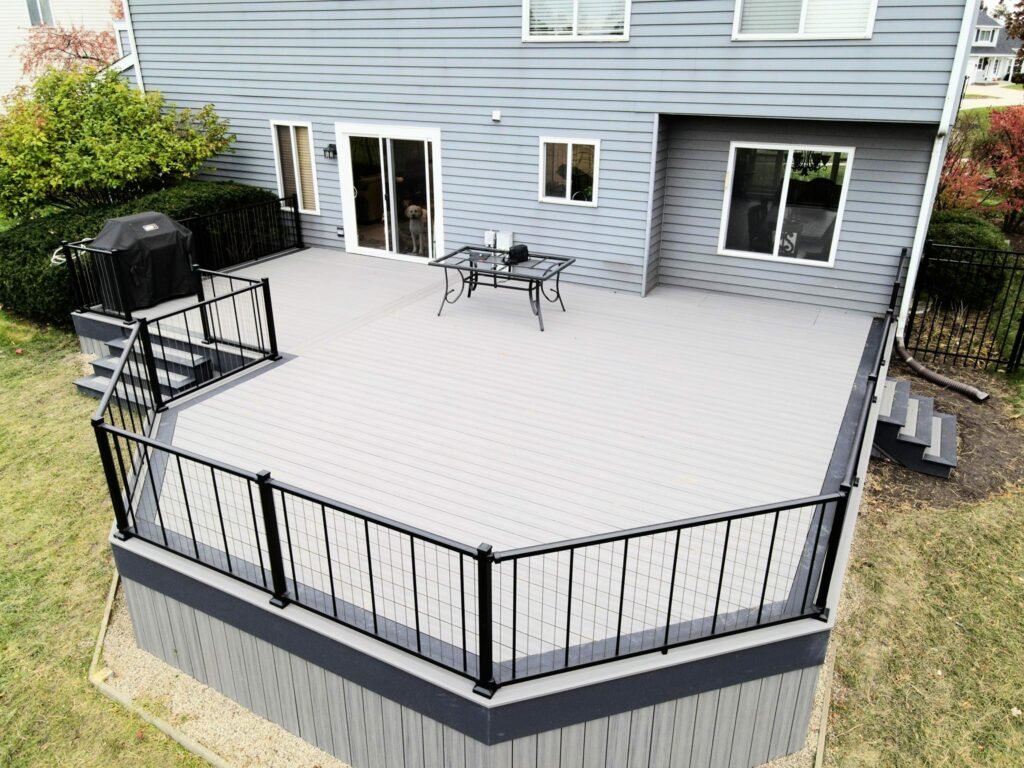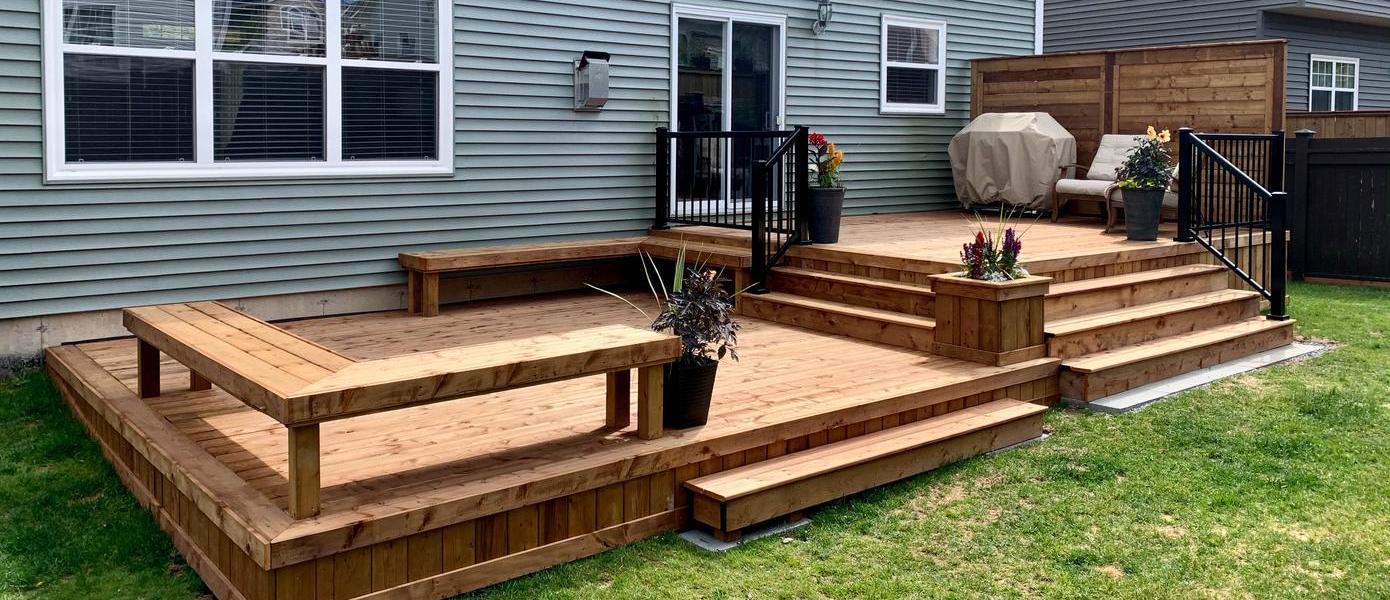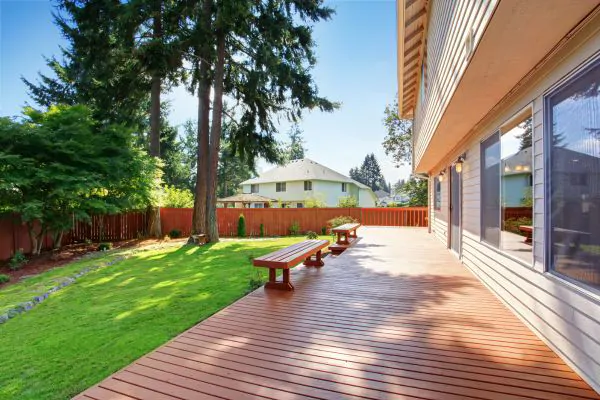Common Permit Issues and How Composite Deck Builders Austin TX Near Me Help You Avoid Them
A Step-by-Step Method to Reliable Deck Installment for Homeowners
When it comes to mounting a deck, cautious planning is crucial. Start by examining your area and setting clear goals. Comprehending exactly how to develop your deck format can make all the distinction in optimizing your outside area.
Analyzing Your Area and Setting Objectives
Just how do you visualize your optimal deck? Take measurements to understand just how much room you've got to function with. Assume regarding how you desire to make use of the deck: will it be a comfy retreat, a gathering spot for friends, or an area for family dishes?
Next, set details objectives. Do you desire to incorporate seating, a grill, or possibly planters? Visualize the circulation of movement and confirm it matches your home's design. Focus on capability, but don't neglect looks. Develop a list of must-haves and nice-to-haves. This clarity will direct your decisions and enhance the planning procedure. By assessing your area and setting clear goals, you'll lay the foundation for a deck that satisfies your requirements completely.
Picking the Right Products
With your goals and room laid out, it's time to pick the appropriate products for your deck. First, think about the climate in your area. If you reside in an area with hefty rain or humidity, decide for products resistant to moisture, like composite outdoor decking or pressure-treated timber. If you choose a natural appearance, hardwoods like cedar and redwood provide beauty and durability yet might require even more upkeep.
Following, think of your spending plan. Composite materials can be more expensive ahead of time yet usually last longer and need much less maintenance. If you're on a tighter budget, dealt with lumber is inexpensive and extensively offered, yet it may need regular maintenance.
Lastly, do not forget regarding looks. Choose shades and appearances that match your home and landscape. By meticulously choosing your products based on these aspects, you'll guarantee your deck not only fulfills your needs however additionally enhances your outside area.
Creating Your Deck Design
Developing a well-thought-out deck format is vital for optimizing both functionality and enjoyment. Beginning by taking into consideration how you prepare to utilize the space. Do you visualize hosting huge celebrations or looking for a comfy place for relaxation? This will lead your layout.
Action your yard to ensure your deck fits harmoniously within the landscape. Think of flow and access; it's important to develop paths that make activity simple. If you're adding furnishings, illustration a format that fits seating, tables, and any type of additional functions like planters or a fire pit.
Likewise, think about the sun and color patterns throughout the day. Placing your deck to capture sunlight throughout cooler months can boost its use. Do not fail to remember about privacy-- including displays or landscaping can assist create an extra intimate setting. With careful preparation, your deck design will certainly not just offer your demands yet also elevate your outdoor experience.
Getting Necessary Authorizations
Prior to you start developing your deck, it's vital to inspect local guidelines and get the needed licenses. Each area has particular policies governing deck building and construction, consisting of size, elevation, and products - pool deck builders austin near me. Start by seeing your local building department or their site to gather information on what's called for
You'll likely require to submit an authorization application and offer comprehensive prepare for your deck, consisting of dimensions and materials. Don't fail to remember to examine if any kind of zoning laws or homeowner association standards apply to your residential property, as they might enforce extra restrictions.
Once you submit your application, the evaluation process can take some time, so plan ahead. If your project doesn't fulfill local codes, you might need to modify your strategies, which can delay your installation. By safeguarding the required authorizations first, you assure that your deck task remains on track and adhere to all laws.
Preparing the Ground and Structure
Preparing the ground and structure for your deck is essential for making sure security and longevity. Beginning by picking the right place-- ideally, a flat area that drains pipes well. Clear the site of any kind of particles, vegetation, or rocks. Next, mark the overview of your deck utilizing stakes and string to picture the space.
When you've defined the area, dig to remove the topsoil, reaching a deepness of about 6 inches. This assists prevent dampness buildup and rot. If you're utilizing concrete grounds, dig openings where your blog posts will go, a minimum of 12 inches deep to reach secure dirt.
Consider including gravel to the bottom of these holes click this for drain. Compact the dirt to produce a solid base, and look for degree with a long board or degree tool. By taking these steps, you'll establish a strong structure that supports your deck for years ahead.
Developing the Deck Structure

This framework is crucial for the toughness of your deck, so take your time and verify each component is effectively mounted. With your deck structure constructed, you're one action closer to appreciating your new outdoor sanctuary!
Adding Finishing Touches and Upkeep Tips
Since your deck is constructed, it's time to concentrate on the ending up touches and maintenance. Picking the appropriate discolor can boost its appearance, while regular cleaning maintains it looking fresh. Don't forget to comply with a seasonal maintenance list to ensure your deck remains in wonderful shape year-round.
Choosing Deck Staining Options
Just how do you pick the best tarnish for your deck? Begin by evaluating the kind of timber. Various woods take in spots differently, so inspect compatibility.

Regular Cleansing Methods

Seasonal Upkeep Checklist
A well-maintained deck can transform your outdoor area right into a sensational retreat, so it's vital to adhere to a seasonal upkeep checklist. Start each springtime by inspecting for any type of damage, such as loose boards or rusting bolts. Clean the surface completely, eliminating dust and debris. When completely dry, use a protective sealer to defend against dampness and UV rays.
In summer, look for mold and mildew or mold and address it promptly. Keep the deck cost-free of clutter and check for signs of wear.
As autumn techniques, clear fallen leaves and debris to stop dampness buildup. Tighten any type of loosened screws.
Finally, during winter season, confirm that snow and ice are gotten rid of to avoid architectural damage. Regular attention to these jobs maintains your deck looking great year-round!
Frequently Asked Inquiries
How Lengthy Does a Common Deck Installation Take?
A regular deck setup can take anywhere from a few days to a number of weeks, depending on size, products, and weather. You'll desire to intend appropriately to guarantee everything goes efficiently and effectively.
Can I Install a Deck on Uneven Ground?
Yes, you can mount a deck on uneven ground. You'll require to level the area, my response usage adjustable post sustains, or think about building a multi-level deck to suit the slope and guarantee stability.
What Tools Do I Required for Deck Installation?
You'll require a few necessary tools for deck setup: a measuring tape, degree, saw, drill, hammer, and screws. Do not fail to remember safety and security gear like handwear covers and goggles to maintain yourself secured while working.
Exactly how Do I Guarantee My Deck Is Safe and Sturdy?
To guarantee your deck's risk-free and tough, regularly inspect for loosened boards, secure railings, and correct support. Use top quality materials, adhere to building ordinance, and think about specialist inspections to preserve its integrity in time.
What Are Usual Mistakes to Prevent Throughout Installation?
When setting up a deck, stay clear of common mistakes like incorrect dimensions, neglecting licenses, making use of low-quality materials, or skipping the leveling procedure. These oversights can compromise safety and durability, so take notice of information throughout the task.